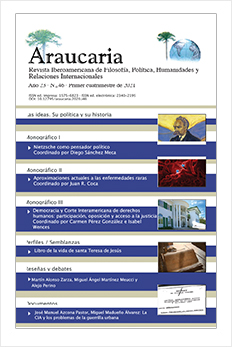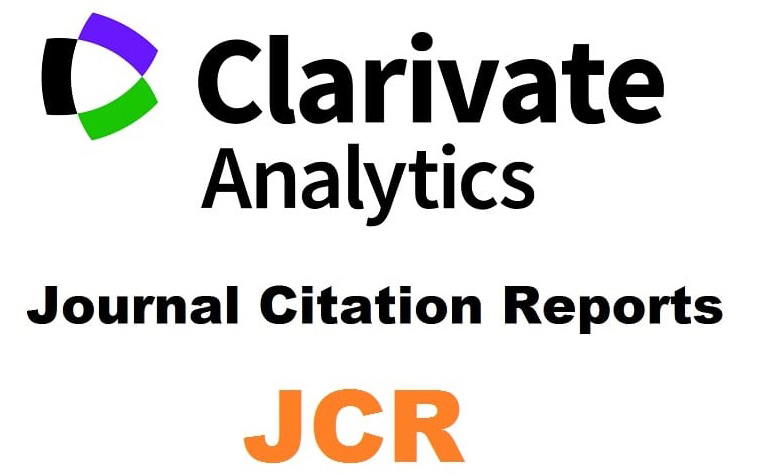Itinerarios lúdicos: del juego medieval al ludocapitalismo digital
DOI:
https://doi.org/10.12795/araucaria.2021.i46.07Keywords:
juego, ludus, eutrapelia, ludocapitalismoAbstract
El juego es hoy la forma que explica y hace concebible, entre otros fenómenos, la subjetividad, la economía, la política, el amor, la guerra y el trabajo, reemplazando mediaciones previas como la poesía, el teatro, la fotografía, la novela y el cine. Sin embargo, carecemos de una genealogía. Así como existen historias de juegos particulares y de otras formas artísticas, la historia del juego suele quedar reducida al sumario del libro de Johan Huizinga, Homo Ludens, y de sus epígonos. A ello se añade que bajo el marbete game studies se ha desarrollado una disciplina que metonimiza juego y videojuego, obliterando el potencial hermenéutico historicista de lo lúdico. Así, en este texto pretendo dos cosas: argumentar a favor de la necesidad de ampliar el espectro formalista de los game studies y ofrecer una distinción entre las dimensiones designativas de la noción de juego para entender sus concepciones premodernas, modernas y posmodernas. Además, propongo retrotraer a la noción de "juego libre" de Immanuel Kant la noción apodíctica de juego de Huizinga y al período pre-capitalista la aparición de una "cultura del ocio" relevante para entender la superación ludocapitalista de la dicotomía ocio-trabajo.Downloads
References
AARSETH, E. J. (1997). Cybertext: perspectives on ergodic literature. Baltimore (MD), Johns Hopkins University Press.
— (2001). "Computer Game Studies, Year One", en Game Studies, 1. Consultado en línea el 16 de octubre de 2019.
ALFONSO X (1555), Las siete partidas del sabio rey don Alonso el Nono. Por Alfonso X el Sabio. López Gregorio, (ed) Salamanca: Andrea de Portonariis.
— (2007), Libro de los juegos e Ordenamiento de las tafurerías. Orellana, Raúl, (ed), Madrid: Fundación José Antonio de Castro, 2007.
ANDERSSEN, C. (1942). “J. Huizinga: Homo Ludens. Versuch einer Bestimmung des Spielelements der Kultur.” Historisk Tidsskrift, 6: pp. 351–58.
ARCANGELI, A. (2014). Recreation in the renaissance: attitudes towards leisure and pastimes in european culture c.1425.-1675. New York: Palgrave Macmillan.
de BRUYNE, E. (1947). “Huizinga, J., Homo Ludens: Proeve Eener Bepaling van Het Spel-element Der Cultuur.” Erasmus 1, pp. 184–86.
BUNCHBALL (2010). Gamification 101: An Introduction to the Use of Games Dynamics to Influence Behavior, San Jose, CA, Bunchball. Consultado en línea el 16 octubre 2019.
— (2011), Winning with Gamification. Tips from the Expert’s Playbook, San Jose, CA, Bunchball. Consultado en línea el 16 octubre 2019.
BURKE, P. (1995). "The Invention of Leisure in Early Modern Europe". Past & Present. 136-150.
CASTRONOVA, E. (2001). Virtual worlds: a first-hand account of market and society on the cyberian frontier. Munich, CESifo.
DELEUZE, G. (2000), "The idea of genesis in Kant's aesthetics", Angelaki 5 (3): pp. 57 – 70.
DETERDING S., DIXON D., KHALED R., & LENNART N. (2011), "From Game Design Elements to Gamefulness: Defining “Gamification”, MindTrek’11, pp. 9-15.
DIBBELL, J. (2007). Play money, or, How I quit my day job and made millions trading virtual loot. New York, Basic Books.
EHERMANN, J (1968). "Homo Ludens Revisited" Yale French Studies, 41, pp. 31-57
ESCOURIDO, J. (2017). "Política alfonsí de la alegría: juegos de tablero, subjetivación y control social" La Corónica: A Journal of Medieval Hispanic Languages, Literatures, and Cultures. 46.1: 73-94.
— (2018). "La ideología literaria en las culturas manuscrita y digital", Virtualis, 9 (17), pp. 161-183.
FINDLAY K. & ALBERTS K. (2011). "Gamification. How effective is it?", Slideshare, 26 septiembre 2011. Consultado en línea el 16 octubre 2019.
FLORIDA, R. L. (2012). The rise of the creative class: revisited. New York, Basic Books.
FRASCA, G., (1998). "Ludology meets narratology: Similitude and differences between (video)games and narrative", Parnasso 3, pp.365-371
— (2003) "Simulation versus narrative: Introduction to ludology", EN Mark J.P. Wolf and Bernard Perron, Video/Game/Theory, Routledge, London.
GABAS, R. (1990). “El libre juego de facultades. Belleza y conocimiento en Kant.” Enrahonar 16: 41-56.
GUYER, P., (2006). “The Harmony of the Faculties Revisited,” en Rebecca Kukla (ed.), Aesthetics and Cognition in Kant's Critical Philosophy, Cambridge: Cambridge UP.:162–193.
— (2009). "The Harmony of the Faculties in Recent Books on the Critique of the Power of Judgment", Journal of Aesthetics and Art Criticism 67 (2): 201-221
HUIZINGA, J. (1972). Homo ludens. Madrid, Alianza.
HUOTARI H. & HAMARI J. (2011), “Gamification” from the perspective of service marketing", Proceedings of CHI 2011 Workshop Gamification. Consultado en línea el 16 octubre 2019.
JUUL, J., (1999) "A clash between game and narrative", M.A. thesis, University of Copenhagen, Dinamarca.
— (2011). Half-real: video games between real rules and fictional worlds. Cambridge, Mass, MIT Press.
KANT, I. (1991), Crítica del juicio, Madrid: Espasa-Calpe.
LATTINI, B. (2009), Ética a Nicómaco, Cartagena, N. (ed), en La contribución de España a la teoría de la traducción Introducción, estudio y antología de textos de los siglos XIV y XV. Frankfurt: Iberoamericana Vervuert.
LEIBS, A. (2004). Sports and games of the Renaissance. Westport, Conn: Greenwood Press.
LESSING, O. (1946). Laoconte o Sobre los límites de la pintura y de la poesía, Buenos Aires: El Ateneo.
MALABY, T. (2007). "Beyond Play: a New Approach to Games". Games and Culture. 2, 95-113.
MANOVICH, L. (2017). El lenguaje de los nuevos medios de comunicación: la imagen en la era digital. Barcelona, Paidós.
MÁRQUEZ VILLANUEVA, F. (1995). El concepto cultural alfonsí. Madrid, Mapfre.
McCORMICK, R. (2013). 'League of Legends' eSports finals watched by 32 million people. [online] The Verge. Consultado en línea el 16 octubre 2019.
McDONALD, P. " Homo Ludens: A Renewed Reading", The American Journal of Play, 11:2, pp. 247-267.
MEHL, J.M. (1990), Les jeux au royaume de France du XIIIème siècle au début du XVIème Siècle, Paris: Fayard.
— (2010), Des jeux et des hommes dans la société médiévale, Paris: Champion.
MENÉNDEZ PIDAL, R. (1957). Poesía juglaresca y orígenes de las literaturas románicas, Madrid: Instituto de Estudios Políticos.
MOLTMANN, J. (1971). Theology of play. New York, Harper & Row.
MURRAY, J. H. (1997). Hamlet on the holodeck: the future of narrative in cyberspace. New York, Free Press.
NÚÑEZ ROLDÁN, F. (2007). Ocio y vida cotidiana en el mundo hispánico en la Edad Moderna. Sevilla: Universidad de Sevilla.
NUTI, A. (1998). Ludus e iocus: percorsi di ludicità nella lingua latina. Treviso: Fondazione
Benetton Studi Ricerche.
OLSON, G. (1982). Literature as Recreation in the Later Middle Ages (Ithaca and London: Cornell UP.
PALLOTTA, F. (2015). Game on: TBS to telecast competitive video gaming league. [online] CNNMoney. Consultado en línea el 16 octubre 2019.
PRONOVOST, G., & D'AMOURS, M. (1990). Leisure Studies: A Re-Examination of Society. Loisir Et Société / Society and Leisure. 13, 39-62.
RAHNER, H. (1972), Man at Play, New York, 1972.
ROJEK, C. (1995). "Veblen, leisure and human need". Leisure Studies. 14, 73-86.
RORTY, R. (1986). "From Logic to Language to Play: a Plenary Address to the InterAmerican Congress", Proceedings and Addresses of the American Philosophical Association 59 (5):747 – 753.
RYAN, M., (2001). Narrative as Virtual Reality: Immersion and Interactivity and Electronic Media, Johns Hopkins University Press, Baltimore.
SALEN, K., & ZIMMERMAN, E. (2010). Rules of play: game design fundamentals. Cambridge, Mass, The MIT Press.
SCHILLER, F. (1990). Cartas sobre la educación estética del hombre, Barcelona: Anthropos, 1990.
SCHLEGEL, F. Von (2005), Conversación sobre la poesía, Buenos Aires: Biblos.
SILVA, H. (2013). "La «gamification» de la vie: sous couleur de jouer?", Sciences du jeu, 1 | 2013. Consultado en línea el 16 octubre 2019.
SUCASAS, Á. (2015). Las ventas de videojuegos doblan a la taquilla del cine en España. [online] EL PAÍS. Consultado en línea el 16 octubre 2019.
SUTTON-SMITH, B. (1997). The ambiguity of play. Cambridge, Mass, Harvard Univ. Press.
VEBLEN, T. B. (1931). Theory of the leisure class. New York, Modern.
VIRNO, P. (2003). Gramática de la multitud para un análisis de las formas de vida contemporáneas. Buenos Aires, Colihue.
VOEGELIN, E. (1948) "Homo Ludens: Versuch einer Bestimmung des Spielements der Kultur. Jan Huizinga " The Journal of Politics 10, no. 1: 179-187.
WARDRIP-FRUIN, N., & HARRIGAN, P. (2004). First person: new media as story, performance, and game. Cambridge, Mass, MIT Press.
WARK, McKENZIE (2007), Gamer Theory, Boston: Harvard University Press.
Downloads
Published
How to Cite
Issue
Section
License
Las ediciones impresa y electrónica de esta Revista son editadas por el Secretariado de Publicaciones de la Universidad de Sevilla, siendo necesario citar la procedencia en cualquier reproducción parcial o total.Salvo indicación contraria, todos los contenidos de la edición electrónica se distribuyen bajo una licencia de uso y distribución “Creative Commons Atribución-NoComercial-SinDerivar 4.0 Internacional”








